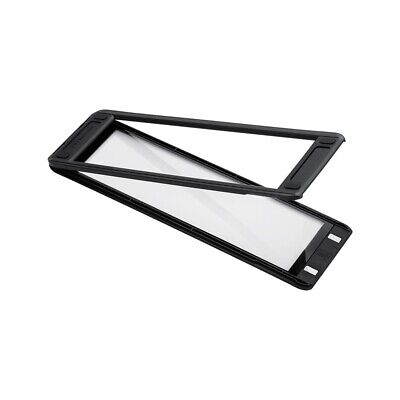ChrisR
I'm a well known grump...
- Messages
- 11,026
- Name
- Chris
- Edit My Images
- Yes
OK, having recently bought a lovely new Fuji GS645S, it looks like I will be scanning quite a bit more 120 on my Epson V500 than in the past few years... but having scanned a roll on Saturday, the supplied 120 film holders are a pain in the proverbial. The available area is essentially 6x12 cm; I can't remember if it had room for two 6x6, but I certainly can only do two 6x4.5 frames, whereas I want to scan a strip of four frames. I've spent much of the morning looking at alternatives. ISTR that @Harlequin565 tried the Lomo Digitaliza 120 film holder and found it was too thick for the V500. The Betterscan ones are now available but look like they'll be over US$100 (plus VAT etc).
I found a thread on Photo.net (https://www.photo.net/forums/topic/494204-can-a-epson-v600-120-film-holder-be-used-on-a-v500/) that suggests that there are 120/brownie holders: "the stock 120/Brownie film holders [...] only allow for 2 6x9 to be scanned at a time". Well, two 6x9 frames would possibly cope with my strip of four 6x4.5 frames (though the inter-frame gap is quite wide). The OP in that case was trying to scan three 6x9 frames, which strikes me as a bit of a problem as apparently the scanning area is only 27 cm long (so no room for inter-frame gaps!). I guess Brownie in this case refers to 620 film... I thought these weren't available, but I did find one from fleabay for US$50, and another from AliExpress for £17. The fleabay US one appears to be genuine Epson, but the AliExpress one I'm not so sure about. The latter also suggests that the V500 should use a design with a shorter film strip, although I can't quite see why!
I also found a quite different (and rather flimsy-looking) design on fleabay, with a long negative area, supposedly suitable for V500 upwards, again for around US$50 plus VAT etc.
Has anyone any advice for me before I splash my hard-earned on one of these?
I found a thread on Photo.net (https://www.photo.net/forums/topic/494204-can-a-epson-v600-120-film-holder-be-used-on-a-v500/) that suggests that there are 120/brownie holders: "the stock 120/Brownie film holders [...] only allow for 2 6x9 to be scanned at a time". Well, two 6x9 frames would possibly cope with my strip of four 6x4.5 frames (though the inter-frame gap is quite wide). The OP in that case was trying to scan three 6x9 frames, which strikes me as a bit of a problem as apparently the scanning area is only 27 cm long (so no room for inter-frame gaps!). I guess Brownie in this case refers to 620 film... I thought these weren't available, but I did find one from fleabay for US$50, and another from AliExpress for £17. The fleabay US one appears to be genuine Epson, but the AliExpress one I'm not so sure about. The latter also suggests that the V500 should use a design with a shorter film strip, although I can't quite see why!
I also found a quite different (and rather flimsy-looking) design on fleabay, with a long negative area, supposedly suitable for V500 upwards, again for around US$50 plus VAT etc.
Has anyone any advice for me before I splash my hard-earned on one of these?



